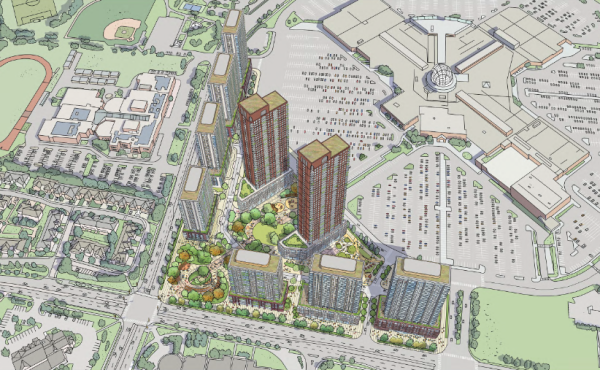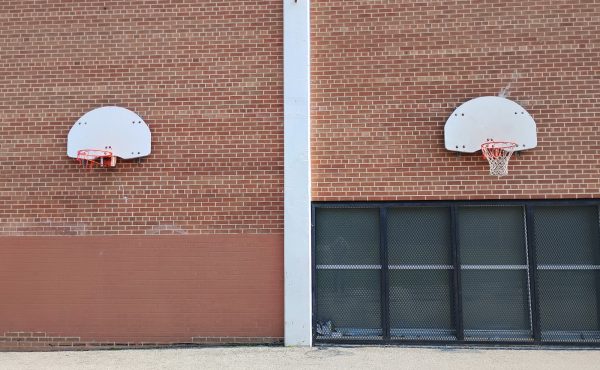This past spring, Jay led her first ever Jane’s Walk — the Not So Typical Regent Park Walk. As a writer and narratologist, Jay was interested in leading a walk that truly engaged community members, uncovered untold stories, and challenged negative perceptions of “at-risk” neighbourhoods. In this series of blog posts, she’ll introduce you to local unsung heroes actively engaged in placemaking and community-based innovation.
One afternoon Agazi and his friend Mohammed, two youth living in Regent Park, met in the Tim Hortons to bounce around an idea. Mohammad had taken notice of his little brother teaching his mother English language skills. He was shocked by how patient and clear his brother was, and equally important, how quickly his mother was picking up the language. It wasn’t as though she hadn’t tried before. Mohammad’s mother, like so many newcomer adults in public housing communities, attended local English as a Second Language programs but often felt lost because of the quick delivery of concepts, the facilitators’ inability to speak their students’ native languages, and the cultural gap. But in the safety of their homes, these same adults prospered, quickly picking up concepts from their children.
The two young men were on to something.
They realized teaching English to local newcomer adults was not just about improving language skills; it was an important act of placemaking. When newcomers are not able to effectively communicate in either of our official languages, they become isolated in their homes and cultural groups. They miss out on celebrations in public spaces, their voices are silenced in important decision making processes, their contributions to local economies are limited, and their gifts never truly become woven into the fabric of vibrant urban neighbourhoods.
With this in mind, Agazi and Mohammed galvanized other youth in the area to discuss this idea further. They were heartened to witness the enthusiasm and dedication of their peers. In less than two weeks these young people — often characterized as “marginalized” and “at-risk” — independently developed a curriculum, secured a local program space, and enlisted countless participants.
That was three years ago.
Since then, the Youth Empowering Parents (YEP) program has flourished. Each semester, neighbourhood teachers as young as 13 years old engage with over 150 adult students eager for their instruction — in not only English language skills, but also tutorials on Facebook, Skype and basic computer skills. In addition to being an important community support, with a waiting list of 300 adult learners, this program has been internationally recognized: in 2011, YEP received the Intercultural Innovation Award from the United Nations. Imagine the excitement of these young people from Regent Park travelling all the way to Munich, Germany to exchange best practices with fellow thought leaders across the globe.
However, I don’t relay this story simply because it is inspirational, or because a part of my graduate research centered on space-based narratives, or even because Agazi reminds me of the guys I grew up with — smart, slightly skeptical, and super laid back. I relay this story to highlight that we’ve got this whole placemaking community revitalization thing backwards. Agazi and Mohammad are true leaders: local placemakers who identified a problem and didn’t wait on funding, an established organization, or professional urban planners to address it. These young men and their peers are individuals who Jane Jacobs, if she were with us, would describe as “people capable of understanding and acting upon their own self-interest.”
Ideas like YEP require us to reconsider placemaking by integrating a more complex analysis of how social issues such as language barriers, poverty, ability, and culture can impede the capacity of some citizens to fully participate in important placemaking activities. With 80% of the population migrating to cities within the next 25 years, it will be crucial for us to examine the ways that urban planning, physical infrastructure, resilience and social supports like the YEP program can work together to create spaces where people thrive.
Jay Pitter is a senior marketing communications specialist and narratologist. With a Master’s Degree in Narrative Theory and Methodology, Jay investigates “story” as a communicative mode, data, art form, economy and social discourse. Her writing credits include CBC Radio, the Toronto Star, Walrus Magazine, Spacing Magazine, Fireweed, Sister Vision Press, TVO and the book Climate Change: Who’s Carrying the Burden?




2 comments
Excellent article! These young men are an inspiration. I agree that it is crucial for the skills, talents, and knowledge of speakers of other languages be valued in our culture. Every human being should be given the opportunity to “thrive”. Well done.
Excellent article. It reminds us all that place-making is not just about the quality of our physical environment (buildings, parks etc.), but also about creating a social environment where people are able and willing to connect with each other. That’s also called society.